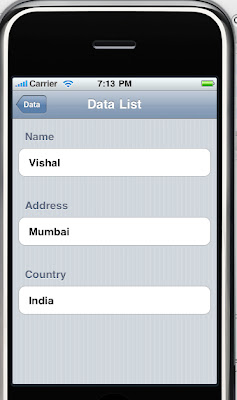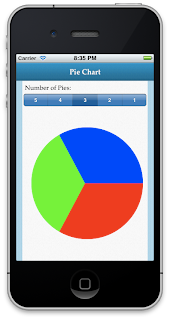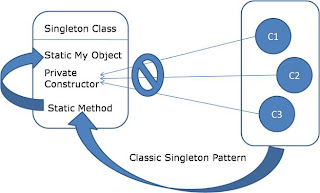Core data for iPhone SDk
Core Data helps you to
save model objects (in the sense of the model-view-controller design pattern)
to a file and get them back again. This is similar to archiving technology but
Core Data offers much more than that. Amongst other things it…
·
Provides an
infrastructure for managing all the changes to your model objects. This gives
you automatic support for undo and redo, and for maintaining reciprocal
relationships between objects.
·
Allows you to keep
just a subset of your model objects in memory at any given time. This is
especially important on iPhone where conserving memory is critical.
·
Uses a schema to
describe the model objects. You define the principal features of your model
classes—including the relationships between them—in a GUI-based editor. This
provides a wealth of basic functionality “for free,” including setting of
default values and attribute value validation.
·
Allows you to maintain
disjoint sets of edits of your objects. This is useful if you want to, for
example, allow the user to make edits in one view that may be discarded without
affecting data displayed in another view.
·
Has an infrastructure
for data store version and migration. This lets you easily upgrade an old
version of the user’s file to the current version.
Important : Core Data
is available on iPhone OS v3.0 and later. This document describes tools and
techniques for iPhone OS v3.0.
How does it work?
Core Data application starts with building three objects (that are instances of classes that are listed below) which are main parts of application :
Core Data application starts with building three objects (that are instances of classes that are listed below) which are main parts of application :
1.
NSManagedObjectModel
2.
NSManagedObjectContext
3.
NSPersistentStoreCoordinator
NSManagedObjectContext – is a bridge between database’s data and user
interface that enables real model-view-controller structure. This object is in
charge for managing all data (all object’s) from database and that means stuff
like capture data (sorting, predicate…), deleting data, updating data,
inserting new data… Its primary responsibility is to manage a collection of
managed objects. The context is a powerful object with a central role in your
application, with responsibilities from life-cycle management to validation and
relationship maintenance.
NSManagedObject – conceptually, NSManagedObject it’s an object
representation of a record in a table in a database, so it’s a model (in the
sense of the model-view-controller design pattern) object that is managed by
Core Data. A managed object is always associated with a managed object context.
When you create a new managed object, you insert it into a context. You fetch
existing records in the database into the context as managed objects. Any
changes you make (whether insertion or deletion of complete objects, or
manipulation of property values) are kept in memory until you actually commit
them to the store by saving the context.
One more controller
you can use is NSFetchedResultsController. This controller enables application to accept
some protocols. It is mostly used by applications that can edit database data.
Example of this kind of application is To-do application where you have list of
to-do’s.
Lets have small user
story here. Meet user Mauro. Let’s imagine that he enters To-do application to
add new to-do (for example – “Remember Ivan to write a new blog post on
Surgeworks blog”) note to existing list of to-do’s. Looking from developer
perspective application just created new subclass of NSManagedObject with
note’s data in it. To save this new object we just have to add it to our
instance of NSManagedObjectContext and call “save” method. Now
NSFetchedResultsController delegate class knows there is update in database
(one more to-do) and it automatically notify’s delegate class. Use of change
notifications can be very usable especially when building larger application’s.
This top level
approach simplifies and enables work with database data without one row of
SQLite statement. One of the most important fact is that you don’t have to use
primary key’s because core data framework creates his own. In fact, Apple’s
documentation says not use primary keys. Now you can actually pass live objects
to NSManagedObjectContext and it to database with one row of code.
When you run core data
driven application for first time application will create SQLite database based
on .xdatamodel in your project. In more detail, application will build SQLite
database structure from NSManagedObjectModel instance that is loaded from
.xdatamodel from [NSBundle mainBundle].



